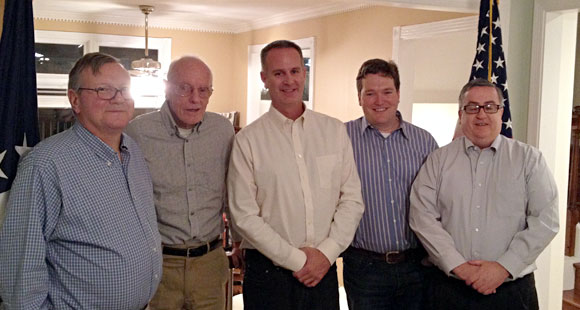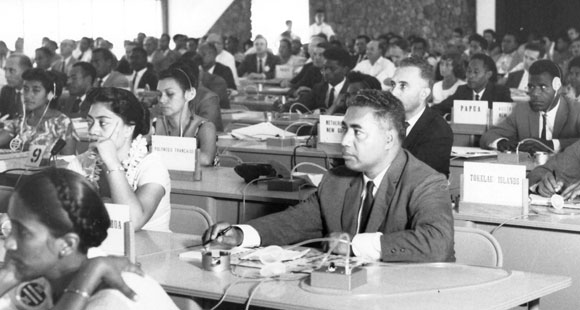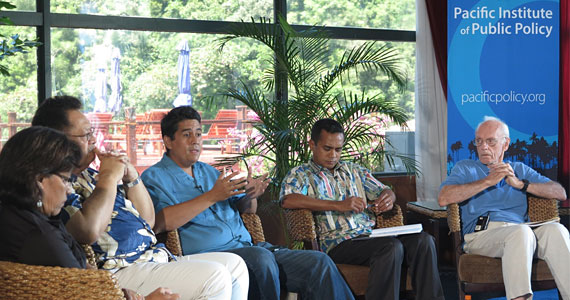The Band of Brothers Hits DC
The island team was in Washington the week of January 13th to do a presentation at the Department of Interior on the performance of the Micronesian economies over the past ten years (2003-2013). This marks the half-way point of the new Compact funding period, so it was a chance to find out how well the island nations are doing.
But it was also a clan gathering for us expatriates who have been long-time cheerleaders for the Micronesian nations. So we all gathered at the home of Pete and Amy Prahar, the former US ambassador to FSM and his wife, for a dinner the first evening. Pete and his guests (Steve Savage, Jason Aubuchon and Kevin O?Keefe along with yours truly are shown in the photo above. Mark Sturton was also somewhere in the house at the time.) The evening was a wonderful time for all of us to catch up with one another. But it also proved another point that I had long suspected. Even government officials can?t simply shake off their island experience and get on with other jobs. Pete, who has a big job now on nuclear matters in a different part of the world, was as animated in his conversation about the islands as the rest of us. You can leave the islands, but they never leave you.
The next afternoon, Kevin O?Keefe and Mark Sturton, working with Jason Aubuchon for the Graduate School based in Hawaii, gave a two-hour presentation on the state of the economies in Micronesia. There were some forty people in the conference room at Interior Department, including Rose Nakanaka (now with IMF), the Micronesian ambassasors (Asterio Takesy from FSM, Charles Paul from RMI and Hersey Kyota from Palau), some old friends from GAO, and another former US ambassador to FSM (Larry Dinger).
The economic picture presented wasn?t too encouraging. Over the past ten years the country that showed the highest percentage of growth was the Marshalls, surprisingly enough. The big gain there was in commercial fishing, which is bringing in $10 million each year. Palau is enjoying a big tourist boom these days?the number of visitors each year has increased from 80,000 to nearly 120,000. Palau?s tourist industry contributes $42 million a year to its economy.? As for FSM, the economy is holding steady?nothing to pin future hopes on, but no disasters either. Yet, FSM has lost 1,500 jobs in the last ten years?so employment has dropped by 9 percent. [I?d encourage you to check out the numbers yourself by clicking here.]
All in all, the island nations are going to have to hope that the trust fund generates enough money to provide for the government when Compact funding ends ten years down the road. There is always the chance of an economic miracle, of course. But I wouldn?t count on one in ten years time.
Following the presentation, the band of brothers headed out to dinner?this time joined by Larry Dinger and Emil Friberg (an old friend from GAO who has been in the islands many times on work assignments). It was a great ending to a short visit that was memorable for me.






